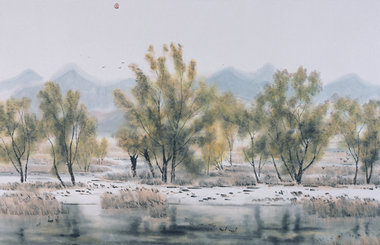In cave graffiti near battle of the somme site, soldiers live on
By Zoe Leroy ( China Daily ) Updated: 2016-05-07 07:41:04
 |
|
A tourist takes a picture. [Photos By Francois Nascimbeni/AFP] |
Going was slow with the poor light in the tunnels said to date back to the third century, which also served as a refuge in a much earlier battle, the Thirty Years' War from 1618-1648.
Little by little Prilaux's team found signatures, inscription dates, home towns, units and military serial numbers left by soldiers waging the bloody trench warfare that lasted nearly five months and saw more than a million casualties on both the Allied and German sides.
'A very addictive job'
"Mostly (they were) done by Australians, but also Americans, British, and some New Zealanders, Canadians and, on occasion, Indians," says Prilaux.
Next came the detective work to unpick the identities and stories of the men who had left their mark in the 3-kilometer-long tunnels.
"Identification is a very addictive job," says Prilaux who first came to the caves in 2014 with the goal of determining their age until he started finding the wartime markings.
With help from the National Archives of Australia, Prilaux's team was able to determine that Leslie Russel Blake, for example, was born in 1890 in a suburb of Melbourne and died from shrapnel wounds to his forehead in October 1918.
Before his death, Blake had been promoted to captain and, during his service with the Australian Field Artillery, was decorated with the Military Cross and a further distinction known as Mentioned in Despatches, according to the Commonwealth War Graves Commission.
He is buried at the Tincourt New British Cemetery, 65 kilometers away from Naours.
|
|
|
|
|
|
|
|

























 Raymond Zhou:
Raymond Zhou: Pauline D Loh:
Pauline D Loh: Hot Pot
Hot Pot Eco China
Eco China China Dream
China Dream China Face
China Face






